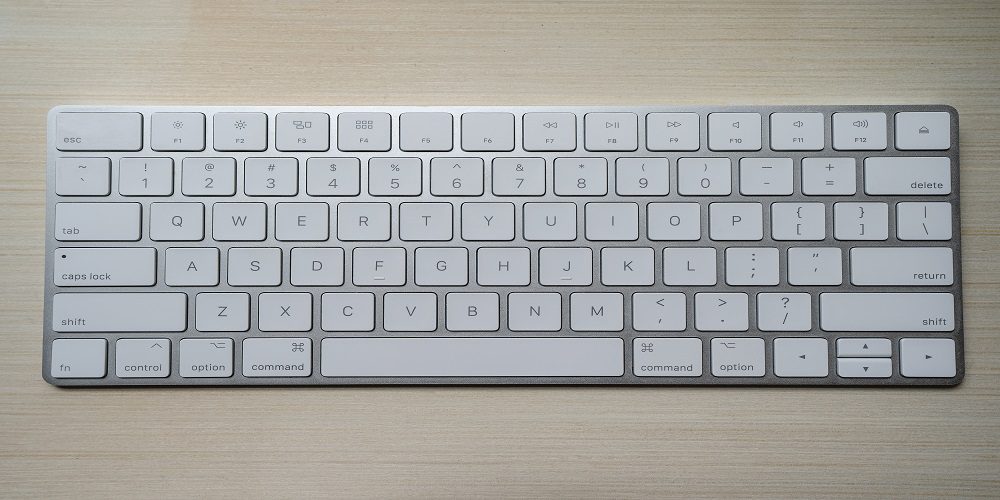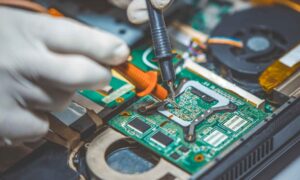Welcome to the enchanting world of computer keyboards, where a simple device holds the power to unlock infinite possibilities. From typing out quick messages to creating mesmerizing pieces of art, this humble companion has become an essential tool in our daily lives. But have you ever wondered about the secrets hidden beneath its sleek exterior? Join us on a captivating journey as we unveil the magic behind the computer keyboard and delve into its fascinating history, surprising features, and untapped potential.
Introduction
When we think of computers, the first thing that comes to mind is usually a screen, a mouse, and maybe even a printer. But one crucial component that often goes overlooked is the keyboard. In fact, without a keyboard, using a computer would be practically impossible. The keyboard is an essential tool for allowing us to interact with and navigate through our devices.
History of the Keyboard: From Typewriters to Modern Keyboards
The keyboard is an essential part of the computer, allowing us to input information and commands quickly and efficiently. However, it may surprise you to know that the modern keyboard has a long history that dates back centuries. From typewriters to modern keyboards, let’s take a journey through the evolution of this magical device.
Early Keyboards:
The first known “keyboard” can be traced back to ancient civilizations such as Egypt and Greece, where scribes used wooden or clay tablets with markings on them for counting and record-keeping purposes. These primitive forms of keyboards were limited in their capabilities but laid the foundation for future developments.
In 1868, a Danish inventor named Rasmus Malling-Hansen introduced one of the earliest versions of a mechanical keyboard called the “Writing Ball.” It was a spherical-shaped device with keys mounted on its surface. However, due to its complex design and high manufacturing costs, it did not gain much popularity.
Typewriters:
The late 1800s saw significant advancements in keyboard technology when typewriters were invented. The first commercially successful typewriter was patented by Christopher Latham Sholes in 1868. The traditional QWERTY layout we use today was also developed during this time by studying common letter combinations to prevent keys from jamming.
Over the next few decades, various companies improved upon Sholes’ design with new features like removable type bars and electric-powered machines. By the mid-20th century, typewriters had become widely used in offices and homes, replacing handwritten documents.
Teletype Terminal Keyboards:
In the 1950s, teletype terminals were introduced, which allowed users to communicate with computers using a keyboard and a printer. These keyboards had a layout similar to typewriters but included additional keys for controlling the teletype machine.
Anatomy of a Keyboard: Key Components and Functions
The keyboard is a fundamental component of any computer, allowing users to input commands and communicate with the system. While it may seem like a simple tool, understanding its anatomy can greatly enhance your typing experience and efficiency. In this section, we will delve into the key components and functions of a keyboard.
1. Keys:
The most obvious component of a keyboard is its keys. These are small buttons that users press in order to input characters or commands into the computer. Most keyboards have 101–104 keys, including letters, numbers, symbols, and special function keys.
2. Alphanumeric Keys:
Alphanumeric keys refer to the standard letter and number keys found on the main section of the keyboard. They are arranged in a QWERTY layout, with each row containing different types of characters. This layout was developed for typewriters in the 19th century and has remained the standard for keyboards ever since.
3. Modifier Keys:
Modifier keys are keys that modify or change the function of other keys when pressed simultaneously. These include Shift, Alt/Option, Ctrl/Cmd (Control/Command), Windows/Start key (on Windows computers), and Fn (Function) key (found on some laptops). They allow for quick access to shortcuts and alternate functions within programs.
4. Enter the key:
Also known as the return key or carriage return key, this large key is used to execute commands such as starting a new line or confirming an action.
5. Spacebar:
This long horizontal key is used to create spaces between words and sentences. It is the largest key on the keyboard and is often pressed with the thumb.
6. Arrow Keys:
The four arrow keys (up, down, left, and right) are used for navigation within documents or web pages. They allow users to move their cursor in different directions without having to use the mouse.
7. Function Keys:
F1-F12 are function keys located at the top of most keyboards. These keys have different functions depending on the software or program being used. For example, F1 is commonly used as a help key, while F5 is often used to refresh a webpage.
8. Numeric Keypad:
The numeric keypad is a set of keys located on the right side of most full-sized keyboards. It mimics a calculator and allows for quick numerical data entry.
Types of Keyboards: Standard, Gaming, Wireless, and More
The keyboard is an essential and familiar tool in the world of computers. It provides a means for users to input information, commands, and instructions into a computer system. However, not all keyboards are created equal. In fact, there are various types of keyboards available on the market today that cater to different needs and preferences. In this section, we will delve deeper into the different types of keyboards—standard, gaming, wireless, and more—to help you understand which one best suits your needs.
Standard Keyboard:
The standard keyboard is the most common type of keyboard used on desktop computers. It consists of a set of keys arranged in a specific pattern, with each key having its own designated function and purpose. These keys include letters, numbers, symbols, and special function keys like Enter, Shift, Backspace, and more. The standard keyboard is designed for everyday use, such as typing documents or browsing the internet.
Gaming Keyboard:
As the name suggests, gaming keyboards are specifically designed for avid gamers who spend several hours playing video games on their computers. One major difference between a gaming keyboard and a standard keyboard is its layout. Gaming keyboards have additional programmable buttons that can be customized according to the gamer’s preferences while playing games. These extra buttons allow gamers to access certain actions or commands quickly without having to navigate through multiple keys on their standard keyboard.
Moreover, gaming keyboards also offer better responsiveness and durability compared to regular ones due to their mechanical switches instead of rubber dome switches found in standard keyboards. This means that gamers can type or press keys faster and more accurately, providing them with an edge in competitive gaming.
Wireless Keyboard:
A wireless keyboard is a type of keyboard that uses radio frequency (RF) technology or Bluetooth to connect to the computer. Unlike standard keyboards that are connected through a wire, wireless keyboards offer greater mobility as they can be used from a distance without being confined by cords. They also help declutter your workspace, as there’s no need for wires to be tangled up.
Some wireless keyboards come with additional features like touchpads, trackballs, or built-in wrist rests for added convenience. However, compared to standard keyboards, they may have a slight delay in response time due to the wireless connection.
How does a keyboard work?
A computer keyboard may seem like a simple tool, but it is actually a complex piece of technology that allows us to communicate with our computers. In this section, we will explore the inner workings of a keyboard and understand how it translates our keystrokes into commands that the computer can understand and execute.
1. The Physical Structure
The first thing you may notice about a keyboard is its physical structure—rows of keys arranged in a specific layout. This layout is known as the QWERTY layout, derived from the first six letters on the top row of keys. The QWERTY layout was designed to prevent typewriters from jamming by placing commonly used letters further apart.
Each key has a small rubber dome underneath it, which acts as a spring and helps to return the key to its original position after being pressed. When you press down on a key, it pushes against this dome, completing an electrical circuit beneath it.
2. Scanning Technology
Underneath the keys lies an electronic circuit board with tiny circuits or pathways etched onto it. These circuits are connected to each key on the keyboard through thin wires.
When you type on your keyboard, these circuits are scanned rapidly by the keyboard’s microcontroller or processor. Each time you press a key, this scanning process sends information about which key was pressed to your computer via a USB or Bluetooth connection.
3. Encoding Information
Once your computer receives information from your keyboard about which keys were pressed, software programs known as device drivers encode this information into a format that the computer can understand. The driver also checks for any key combinations, such as CTRL + C or ALT + TAB, and translates them into specific commands.
4. Communication with the Computer
The encoded information is then sent to the computer’s operating system, which processes it and takes appropriate action based on the keys pressed. For example, if you type a letter, it will appear on your screen; if you press backspace, it will delete the previous character. In addition, certain key combinations or special keys, like function keys, can perform specific functions depending on the software in use.
5. Keyboard Shortcuts
Keyboard shortcuts are combinations of two or more keys that perform a specific action on your computer without needing to navigate through menus and options. These shortcuts help to increase efficiency and productivity while using a computer.
6. Input Languages
Keyboards are designed with different language layouts to allow users to type in their native language comfortably. When typing in a different language, pressing a key may produce a different character than what is printed on the keycap. The operating system has an input language setting that tells it which characters correspond to each keypress.
Conclusion
Keyboards are essential tools for interacting with computers. With the advancement of technology, we now have more advanced keyboards with features like backlighting, multimedia keys, and customizable layouts. However, the basic functioning of a keyboard remains the same: converting our keystrokes into commands that allow us to communicate with our computers effectively.



































